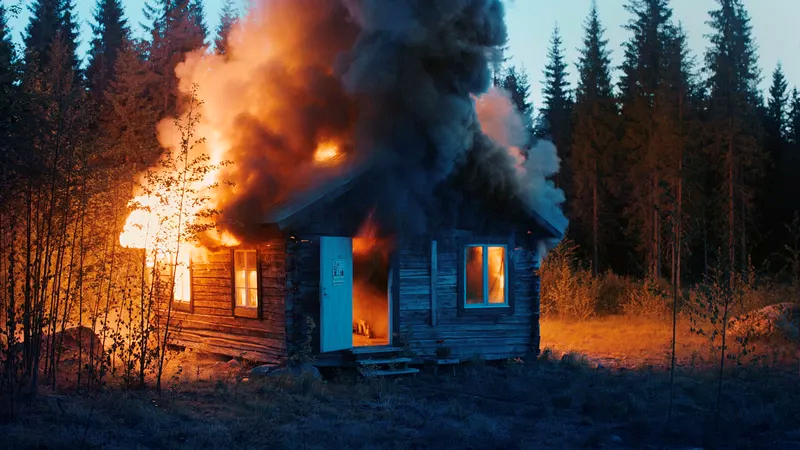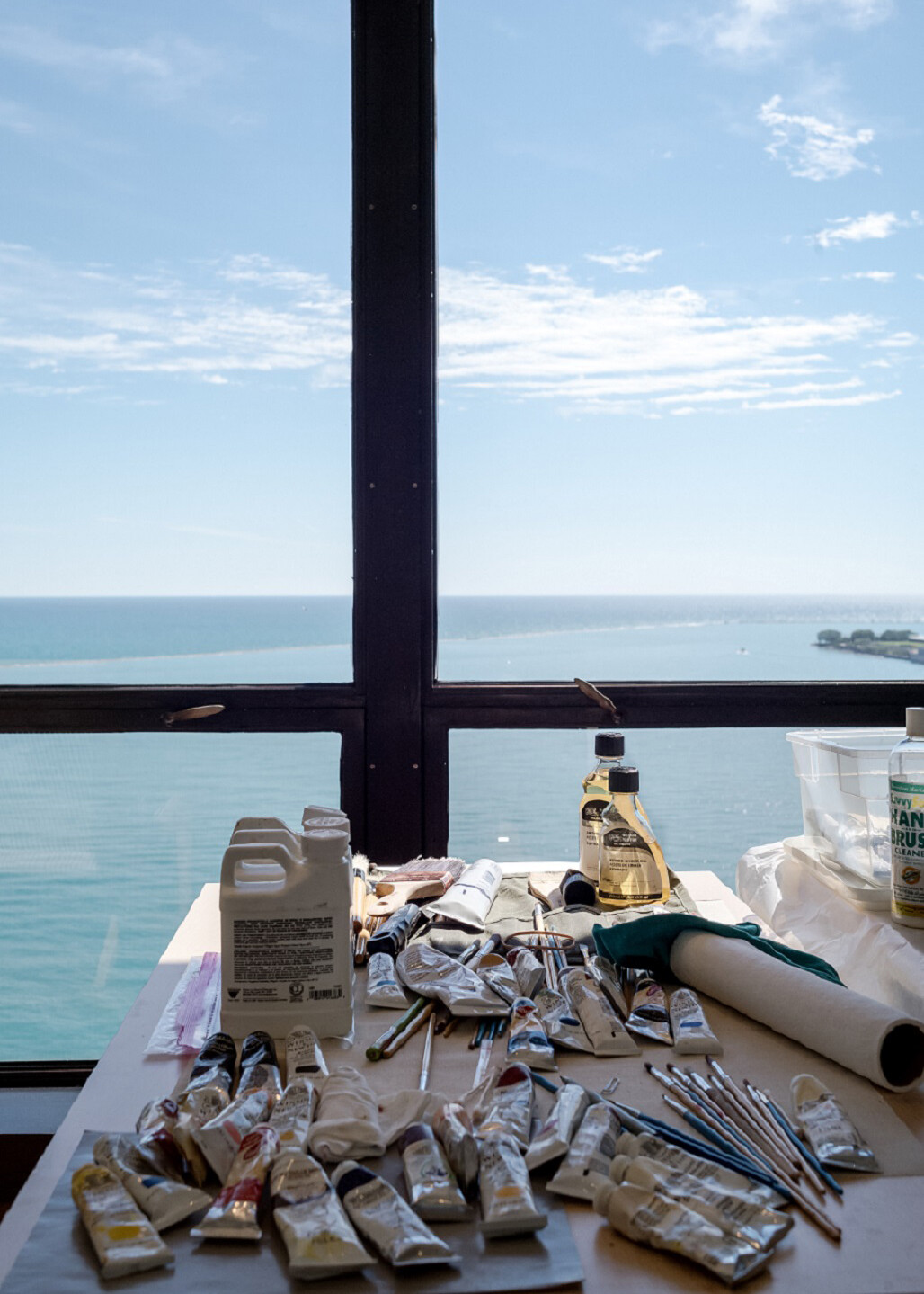April 2–November 26, 2023
14520 River Road
Plano, Illinois 60545
United States
Hours: Wednesday–Sunday 3:30pm–9:30am
T +1 630 552 0052
farnsworth@farnsworthhouse.org
The Last of Animal Builders is curated by Alberto Ortega Trejo and features the works of Faysal Altunbozar, Selva Aparicio, ASMA, Daniel Baird, Renée Green, Claudia Hart, Ragnar Kjartansson, Michael Rakowitz, Joshi Radin, and Thiago Rocha Pitta.
The works in this show, selected from the Thoma Foundation’s collection and several Chicago-based artists, open a dialogue between the artists and our iconic Mies van der Rohe–designed home and surroundings. The show offers new perspectives and critiques on modern architecture, power relations in the built environment, and examines the construction of nature as an intellectual framework. Whether through video, drawing, or sculpture, the works in this exhibition engage animal, vegetal, and mineral metaphors as vehicles to suggest alternative interpretations of human becoming, social transformation, and material exchange. This show both enhances our current staging of the House and provides a fresh lens to view our space and history with a special nod to and commentary on Lord Palumbo’s former sculpture garden on the grounds.
About The Last of Animal Builders
In 1970, one year before her death, the acclaimed architecture critic Sibyl Moholy- Nagy, in “Chapter Three: Defenseless Breeders,” of her unpublished manuscript titled Pragma, wrote:
“What distinguishes animal structure from human structure is this: in animal structure, structure and space are one. Structure is not means to span a functional void, but structure is the functional void: beehive, nest, spiderweb, etc. A secondary factor: there are no alternatives, which makes Mies (van der Rohe) and SOM, the last of animal builders.”
With this declaration, Sibyl Moholy-Nagy allows us to think about the complex relations established between the human, the animal, nature, society and economy having architecture as its mediating and determining mechanism. By framing the work of Mies van der Rohe through the lens of animality, Sibyl Mohly-Nagy complicates classical understandings of the legacy of one of the most iconic architects of architectural modernity and forces us to engage with a multispecies ethics and politics as a fundamental aspect of the ways in which we produce our spaces and societies. By announcing the end of animal logic within architectural modernity and by declaring Mies van der Rohe as one of The Last of Animal Builders, Sibyl seems to expect the modern human to become something beyond its animal condition. Architecture, according to Sibyl’s writings, is the artificial matrix by which human societies refine their biological development. However, in such an argument she seems to unwillingly justify modernity as a logical stage in evolution, and in doing so, isolates it from its political condition.
But the critical question emerging from such declarations resides in the possibility to think of the human as a chimeric being, an organism able to achieve all possible forms and formations by means of architecture, art and technology. We can say then, following this line of thinking, that we are human, only to the extent that we are able to create devices of chimerization, devices to allow our frail bodies not only to survive but to transform, to allow the possibilities of our thinking to expand, to create devices to endure hostile environments, to see and think through darkness, to attempt to think like other living organisms do, and to create a world where all potential intelligences are able to thrive.
Described by Sibyl Moholy-Nagy as defenseless breeders, humans connect with their fellow living organisms through mimicry and interdependence at best, or in exploitation and extraction at worst. By borrowing ideas and metaphors from the animal, vegetal, mineral and insect worlds, we have moulded our societies based on the kinds of interactions and behaviours we believe as efficient based on our perspective on the workings of non-human worlds. Throughout modernity and still determining our contemporary politics, the belief on the separation of the human and the “natural” has only worked to enhance relations of exploitation rather than of collaboration, co-existence and of mutual beneficial transformations. As a contemporary reinterpretation of the sculpture walk that occupied the property during Lord Peter Palumbo’s ownership of the house, this temporary exhibition brings artworks selected from Thoma Foundation’s Art Collection and works by contemporary artists to the Edith Farnsworth House and its landscape, but also spaces normally out of sight for visitors of this icon of architectural modernity.
The artworks selected from Thoma Foundation reflect on how architectural modernity, minimalism and capitalism have shaped our understandings of nature, the human, the non-human and economy. Bringing attention to the legacies of western modernity in architecture, and enabling a poetics of destruction and regeneration, these artworks engage with the existing architectures of the site through video installations. The artists selected to contribute with new and existing artworks, use plant, animal and mineral metaphors as a way to address social issues, questions of human desire and transformation, ways of engaging with the fragility of our bodies, and processes of thinking beyond and through anthropocentric power relations by means of sculpture and drawing. —Alberto Ortega Trejo
About The Edith Farnsworth House
The Edith Farnsworth House is in Plano, Illinois just outside of Chicago. This Mies van der Rohe–designed midcentury masterpiece is a pilgrimage site for architects and designers world-wide and is considered one of the most important Modern assets in the United States. The National Trust for Historic Preservation and select Chicago leaders came together in 2003 to purchase the home to ensure it remained in its inspired and original place across 60 acres of land along the banks of the Fox River.




